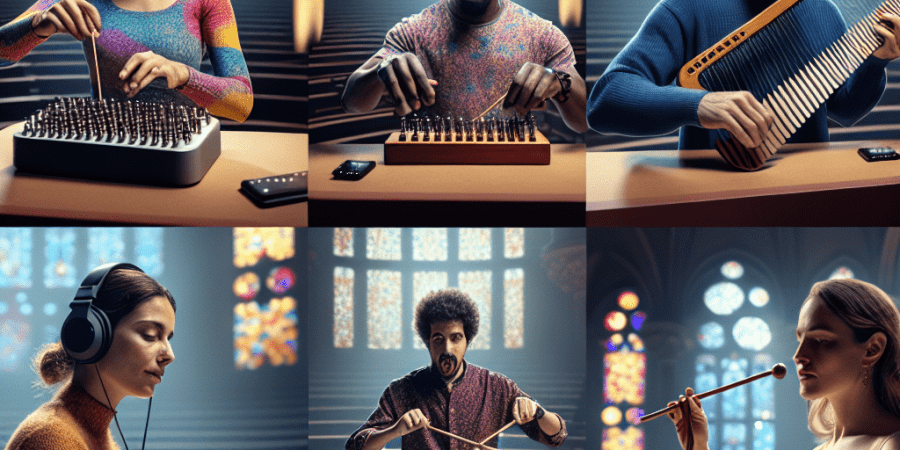Unconventional Instruments in Modern Classical Music
In the intriguing world of modern classical music, innovation and creativity know no bounds. While the conventional symphony orchestra instruments like the violin, piano, and flute still hold prominent places in compositions, there is a growing trend among composers to incorporate unconventional instruments. These unique sounds and timbres add a fresh dimension to the classical music landscape. In this article, we’ll explore some of these unusual instruments that have found their way into the modern classical genre.
The Alluring Theremin
When it comes to unconventional instruments, the theremin often tops the list. Invented in the 1920s by Léon Theremin, this electronic instrument is played without physical contact. Musicians manipulate the electric fields around two metal antennas with their hands to control pitch and volume. The eerie, otherworldly sounds produced by the theremin have made it a favorite for sci-fi movie scores, but modern classical composers like Carolina Eyck are breathing new life into it.
The Colorful Cajón
Originally from Peru, the cajón is a box-shaped percussion instrument that players sit on and strike with their hands. Though it originated in Afro-Peruvian music, its versatility and rich array of sounds have led modern classical composers to include it in their repertoires. The cajón adds a layer of rhythm and color that traditional orchestral percussion sometimes lacks.
The Exotic Hang Drum
Moving on to another striking instrument, the hang drum or handpan has captured the imaginations of many contemporary musicians. Invented in Switzerland in the early 2000s, the hang drum produces ethereal, resonant tones when struck. It’s played by hand and provides a meditative, almost hypnotic sound that blends seamlessly into modern classical compositions. Composers like Manu Delago have pioneered its use in orchestras.
The Unassuming Wine Glasses
You might be surprised to learn that an ordinary object like a wine glass can also be an instrument. Playing wine glasses, or the “glass harp,” involves running moistened fingers along the rims to produce clear, ringing tones. This technique, which dates back to the 1700s, has seen a revival in modern classical music for its pure, unique sound. Performers like Robert Tiso demonstrate that even the simplest items can create extraordinary music.
The Mysterious Waterphone
If you’ve ever heard a sound that seems to rise from the depths of the ocean, you might have encountered the waterphone. Invented by Richard Waters in the 1960s, this instrument consists of a stainless steel resonator bowl with rods of different lengths protruding from it. When played with a bow, the waterphone creates haunting, echoing sounds reminiscent of a whale’s song. It has found a niche in both film scores and modern classical compositions for its unique auditory signature.
The Playful Toy Piano
Finally, let’s not forget the toy piano. While it may sound like child’s play, this pint-sized piano has captured the hearts of serious composers and performers. The toy piano’s bright, tinkling sound brings a sense of whimsy and curiosity to modern classical works. John Cage, a pioneer in the realm of unconventional music, famously used the toy piano in several of his compositions, influencing a new generation of musicians to experiment with this unassuming instrument.
The Future of Unconventional Instruments
As technology and artistic expression evolve, so too will the array of unconventional instruments found in modern classical music. The innovative spirit of composers and musicians ensures that the boundaries of what is considered a “classical instrument” will continue to expand. Who knows what everyday object might become the next musical sensation?
Whether it’s the eerie tones of the theremin, the rhythmic pulses of the cajón, or the meditative hum of the hang drum, these unconventional instruments contribute to the ever-changing, ever-inspiring world of modern classical music.
So, the next time you find yourself at a concert or listening to a new composition, keep an ear out for these unique sounds. They just might be the highlight of your musical adventure.
Stay Tuned for More Musical Explorations!
Thanks for joining us on this sonic journey through the world of unconventional instruments in modern classical music. Keep exploring, keep listening, and most importantly, keep enjoying the music!
